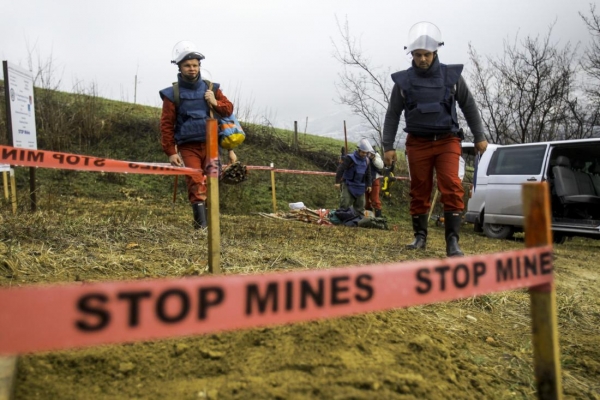This paper examines a practical and innovative example of the use of drones in support of mine clearance operations in the context of the humanitarian response to the Balkan floods of Spring 2014.
This experience, a milestone in the development of unmanned technologies for humanitarian purposes, is in a geographical area no longer marked by conflict but on the path of recent migration and refugee routes. It is the first example of the use of drones for mine clearance operations following a natural disaster. The risk posed by the return of populations displaced by the floods towards zones which are now contaminated by unexploded devices, and the re-opening of migratory corridors through poorly controlled rural areas calls for particular attention to be paid to the speed of evaluation of and intervention in the areas at risk.
This research focuses on the activities performed by drones in emergency situations in relation to traditional methods of mine clearance, in order to then review the impact made by drones and analyse the conclusions drawn by experts from this experience. Whilst underlining the vast potential for development, this analysis of the humanitarian use of drones highlights their advantages in terms of reduced costs, portability and the variety of possible uses on the ground, especially where operations are dangerous and have difficult access. A purely empirical approach concerning the role of unmanned or remote-controlled devices has therefore been adopted.
In the last few years, the use of unmanned aerial vehicles, commonly known as drones, has played a major part in the debate about the prospects and limits of the use of technology in the humanitarian field. Known in the international arena for their military use, and in particular for the selective elimination of highly strategic objectives, drones suffer from a widespread unfavourable perception which inhibits their application in the humanitarian sphere. In spite of this, recent successes in responding to natural disasters and the overwhelming commercial success of drones are progressively weakening this stigmatization. The value of case studies carried out in Balkan countries like Croatia and Bosnia-Herzegovina also lies in contributing to the debate on the basis of factual and quantifiable elements. In this way, distance can be taken from partisan positions and informed strategic choices can be made.
Drones and Demining in the Balkan Floods
 Members of Bosnia and Herzegovina Mine Action Centre (BHMAC) clear landmines at a minefield, in Sarajevo, Bosnia and Herzegovina on April 5, 2015
© Anadolu Agency/Getty Images
Members of Bosnia and Herzegovina Mine Action Centre (BHMAC) clear landmines at a minefield, in Sarajevo, Bosnia and Herzegovina on April 5, 2015
© Anadolu Agency/Getty Images
This research by Giulio Coppi examines a practical and innovative example of the use of drones for mine clearance operations in the humanitarian response to the Balkan floods of Spring 2014.
Category:
Publications
2016 Copyright L'Osservatorio. All rights reserved
Website by www.sitiwebegrafica.it






